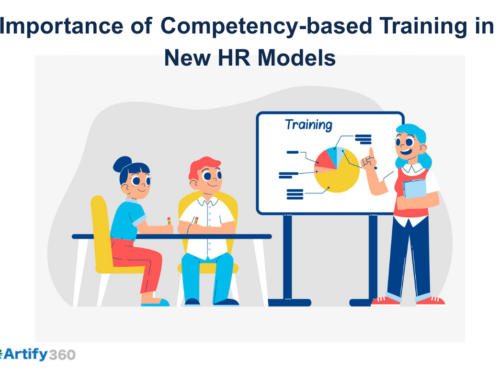HR technology is growing at significantly faster rates compared to the general innovative techniques adopted by the business world. The main reason for this is the core feature integration tactic that you can apply to an HR model. Most of the success in the HR domain can be attributed to the focus on bringing out HR Software as a Service (SaaS) products, tools, and platforms matching consumer needs.
The growth prospects of the HR domain are well-documented in the Middle East regions as well. The rise of HR technology is geometric in these countries, including the GCC nations. Hop in to discover more about the upcoming HRMS predictions based on research reports and existing statistical surveys.
HR Trend Projections for The Middle East
The trendsetting HR innovations are rapidly happening in the Middle East. However, each new technology gets sufficient time to adapt to the organizational landscape in the region. Some projections for the immediate future of HR operations in the Middle East are shown below.
- The process automation concept is gaining more ground in terms of business impact and productivity levels. HR automation is an essential part of all industry types and niches.
- Using Industry 4.0 techniques and tools is showcasing a bright future for the HR domain. Artificial intelligence is the most frequently used platform in this scenario.
- Employee engagement and resource management parameters are experiencing further improvement owing to their relevance to the foundation of organizational progress.
- Remote and hybrid models will grow by vast numbers. It will create a more flexible work environment, plus work-life balance will make way for work-life fit features.
- More documentation and the existence of dedicated digital footprints will help the region develop a core integrated business model that promotes HR in a broader vision without losing the original essence.
- HR has slowly changed from a rapid growth process to a more balancing act between operations performance and potential integrations. It makes the HR warning process a more flamboyant one for the organization.
- As in the case of concentrating on customers for products and services, an employee-centric approach and model will arise concerning the HR operations category.
- Flexible workforce and workflow management techniques will go hand-in-hand, aiding in the mutual growth of both metrics by a wider margin.
- Training modules will benefit from the capacity execution of new business principles and values as part of the HR process.
- Personalized and customizable HR solutions will portray more value and could be beneficial to the specific operations sector of any business.
Top Predictions for The Middle East HR Operations
Apart from the trends and projections, HR modules indicate a few predictions that convey the possible expansion of the segment to newer horizons. A short list of the top HR predictions in the Middle East today is given below:
- The technological impact is going to grow at significant levels as usual, but there is a catch. More mindful and conscious HR methods will be added to the mix where human capital management gets more value-added roles than innovative technological advances. Chances are high that the market in the Middle East will adopt a strategic balance of the two functions with feasible ease.
- The review and feedback system of the HR operations process will be more vibrant, causing a breakthrough in the implementation of efficient upgrades at regular intervals.
- The education of HR objectives and end-goals for the workforce will vastly improve. It will help resources in various divisions and departments come together to boost the common organizational objectives. This learning curve will empower your resources, too.
- There will be a pause to the recent unpredictability that affected the HR domain. Pandemic-related problems that directly affected the region are now thankfully over. A new ray of hope will rise, helping HR enthusiasts to witness a dawn of less problematic operations divisions.
- Industry-based HR support will grow, enabling specialized business types and models to receive optimal impact for their development. It will create stable internal integrations for the particular business model in question.
The predictions for HR activities based in the Middle East will continue as newer studies are happening consistently. It is safe to presume that the HRMS technology will continue to improve and raise the bar on setting a dynamic work environment for all parties involved.
Digital HR Insights & HRMS Objectives from The Middle East
Here, in this segment, we will take a more open look at how technology and innovation impart greater value to the overall probability of HR operations attaining crucial heights. The insights and HRMS objectives based on the application of digital HR solutions in the Middle East are provided in the below points.
- The primary objective of HRMS technology in the Middle East is to build a futuristic market opportunity with top-notch operations provisions. You can bank on core HR technology to create and develop predictive business models.
- Forecasting is an essential part of new-age HR systems. HRMS digitization illustrates the presence of accurate data records in vast quantities. It enables you to leverage actionable insights.
- The adoption of smart marketing tools and promotional integration channels is on the rise. Detailed under numerous sections of HR predictions for 2024, it will empower the HR module to perform at its optimum best range.
- Budget-friendly HR strategies will be adopted and implemented in regulated workflow. The highlight of this feature will be the direct interaction between business productivity and positive, performance-oriented work culture.
- Employee-oriented HR activities will be on the rise, thereby creating a crucial role for them suitably fitting to the workforce and operations principles.
- Process automation is a core factor that showcases the value of operations within an organizational structure. Adequate use of HR technology satisfies the fulfillment of this scenario because of its core competent features.
- The Middle East region’s industrial and marketplace valuation is gaining and spreading stability. It will amount to the creation of an exclusive platform where business resilience is promoted.
- HR strategy and its impact varies by region. There is no one-size-fits-all approach for the countries in the Middle East. Consider specific regions like UAE, Saudi Arabia, Bahrain, Qatar, Kuwait, Oman, etc., while checking out the HRMS implementation.
- Work cultures and business models are constantly changing and evolving at a faster pace. It is better to test any HR technology first in smaller prototype versions. It helps you analyze and determine the feasibility of the whole HR project.
A Short Note on Artify 360 – HR Division’s Best Friend in The Middle East
Artify 360 HRMS deserves special mention when discussing the great cloud HR software tools and technology embraced by the Middle East. It is an automated HRMS software suite that lights up the domain with its excellent mix of core HR modules and functions. The best advantage of this full-fledged solution is its personalization feature. You can add and upgrade your HR process management platform to match the needs of the specific Middle East marketplace conditions that you are dealing with.
The ultimate goal of Artify 360 HR payroll Software is to boost the operational efficiency and HR management quotient in the areas of the Middle East, thereby causing a significant rise in the region’s business value. You may also opt for building an authentic HR feature that can be integrated with every other segment of the organization. It is also interesting to note that HR technology works best if you guide the business with an employee-centric model and consistent productivity approach. Artify 360 HR software system satisfies both points with ease.
You can visit the list of esteemed clientele from the Middle East already served by the software suite. It is also possible to check out the vast array of innate technologies within the SaaS product that you can utilize for managing the general operations profile of the company. Book a free trial with the expert in-house team to receive more details on Artify.






